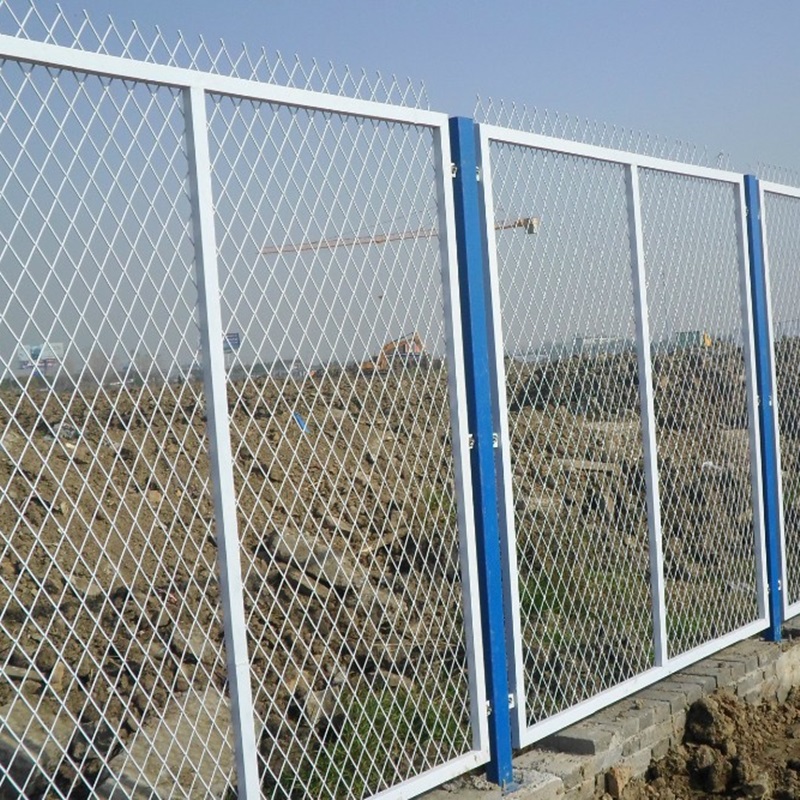Նյմ . 15, 2024 14:19 Back to list
perforated sheet product
The Versatility and Applications of Perforated Sheet Products
Perforated sheets, characterized by a pattern of holes punched into various materials, have become integral components across numerous industries. Their array of applications is as diverse as the materials they are made from, including metals, plastics, and composites. This article delves into the numerous benefits, applications, and the manufacturing processes involved in creating these versatile products.
What is a Perforated Sheet?
A perforated sheet is essentially a flat plane that features a series of holes of varying sizes, arranged in specific patterns. These sheets can be customized in numerous ways, such as the size, shape, and spacing of the holes. Common materials used for perforated sheets include stainless steel, aluminum, galvanized steel, and plastic, each chosen based on the intended application and environmental factors.
Benefits of Perforated Sheets
The popularity of perforated sheets can be attributed to several key benefits
1. Lightweight yet Strong When designed correctly, perforated sheets maintain structural integrity while allowing for significant weight reduction, making them ideal for applications where weight is a concern.
2. Aesthetic Appeal Perforated designs add aesthetic value to products and structures. They can be used in architectural applications to create unique and attractive exteriors.
3. Ventilation and Filtration The holes in perforated sheets allow for airflow, making them suitable for applications requiring ventilation or filtration.
4. Acoustic Control Certain patterns can be optimized to absorb sound, making perforated sheets useful in environments where noise reduction is critical.
Applications Across Industries
perforated sheet product

The versatility of perforated sheets means they are found in a broad range of applications, including but not limited to
1. Construction and Architecture Perforated metal panels are often used in building facades and interior designs. They can provide shade, enhance building aesthetics, and serve functional purposes, such as allowing for natural light while maintaining privacy.
2. Automotive In the automotive industry, perforated sheets are used in noise reduction and cooling systems. They are often found in panels and grilles, helping to accomplish both functionality and style.
3. Manufacturing These sheets are extensively used in manufacturing processes for filtration and sorting materials. In the food industry, perforated metal sheets facilitate the safe processing of food products by allowing debris to escape while retaining the food.
4. Electronics In electronics, perforated sheets are employed in the design of speaker grills and other sound systems. They help enhance sound quality while protecting internal components, showcasing the blend of functionality and design.
5. Agriculture In agricultural settings, perforated sheets are useful for creating bins that allow airflow for stored grains or as protective covers for crops, where ventilation is necessary yet physical protection from pests is required.
Manufacturing Process
Creating perforated sheets involves precise engineering and advanced technology. The process begins with selecting the appropriate material, which is then cut into sheets. The sheets are fed into a punch press, where a series of punches create holes according to the designed pattern. After the holes are punched, the sheets may undergo finishing processes such as deburring, cleaning, or applying protective coatings to enhance durability and corrosion resistance.
Quality control is critical at every stage to ensure the sheets meet the required specifications. Advanced software and laser cutting technologies can provide increased precision in both the hole pattern and material thickness.
Conclusion
Perforated sheets represent a fascinating intersection of form and function. Their ability to cater to diverse applications while offering aesthetic and practical benefits makes them invaluable across industries. As technology advances, we can expect further innovations in the design and application of perforated sheets, solidifying their place as essential components in modern manufacturing and architectural design. Whether used for aesthetics, ventilation, or sound control, perforated sheets will continue to be at the forefront of design and engineering solutions.
-
Steel Expanded Metal Mesh Fence: Secure & Durable Perimeter Solution
NewsAug.05,2025
-
Hop Dipped Galvanized / PVC Coated Temporary Fence - Anping County Xingzhi Metal Wiremesh Products Co.,Ltd | Durable, Versatile, Secure
NewsAug.04,2025
-
Double Loop Concertina Razor Barbed Wire Coil - High-Security Fencing
NewsAug.04,2025
-
Hop Dipped Galvanized / PVC Coated Temporary Fence-Anping County Xingzhi Metal Wiremesh Products Co., Ltd.|Durable Temporary Fencing, Corrosion Resistant Solutions
NewsAug.03,2025
-
Hop Dipped Galvanized / PVC Coated Temporary Fence - Anping County Xingzhi Metal Wiremesh Products Co., Ltd|Durable Temporary Fencing Solutions&Customizable Security Systems
NewsAug.03,2025
-
Hop Dipped Galvanized / PVC Coated Temporary Fence - Anping County Xingzhi Metal Wiremesh Products Co., Ltd.|Corrosion Resistant&Modular Design
NewsAug.03,2025



